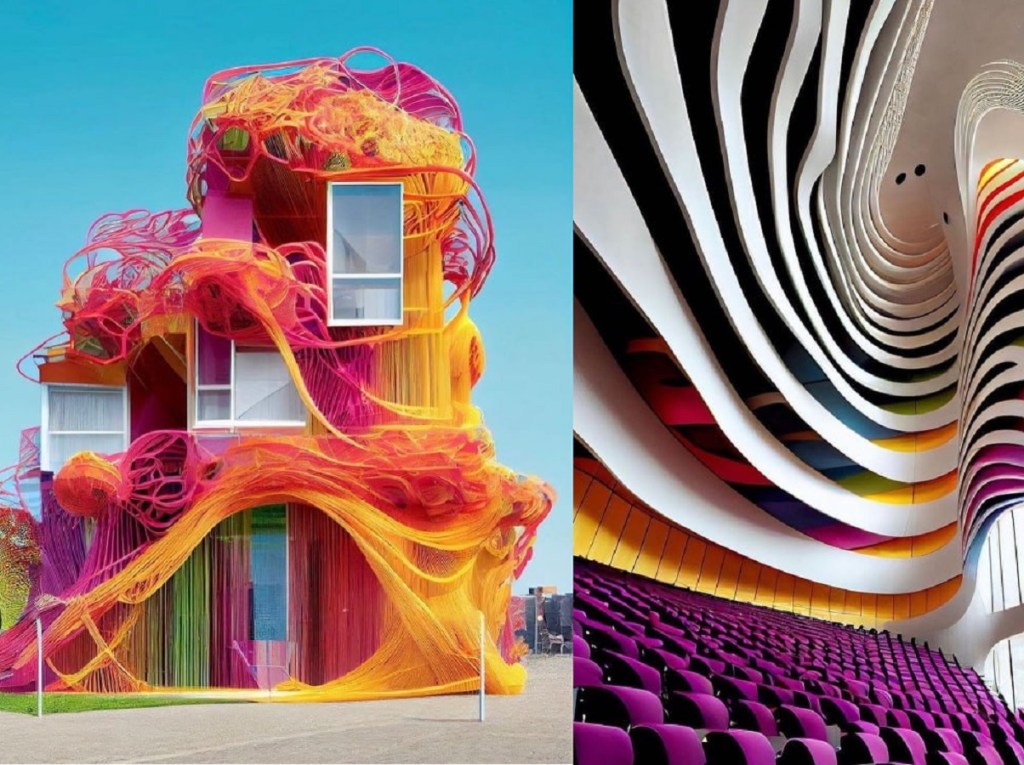Artificial Intelligence (AI) is being embraced by architects, who have made AI their best friend. The ideas coming out of the field are achingly beautiful and promise a utopian future.
Artificial intelligence is changing how we work, and there’s no going back. While we have seen AI write blog posts, help with marketing plans and write personalised diet regimes, AI is also being used for other wild ideas. These ideas are changing our world fast.
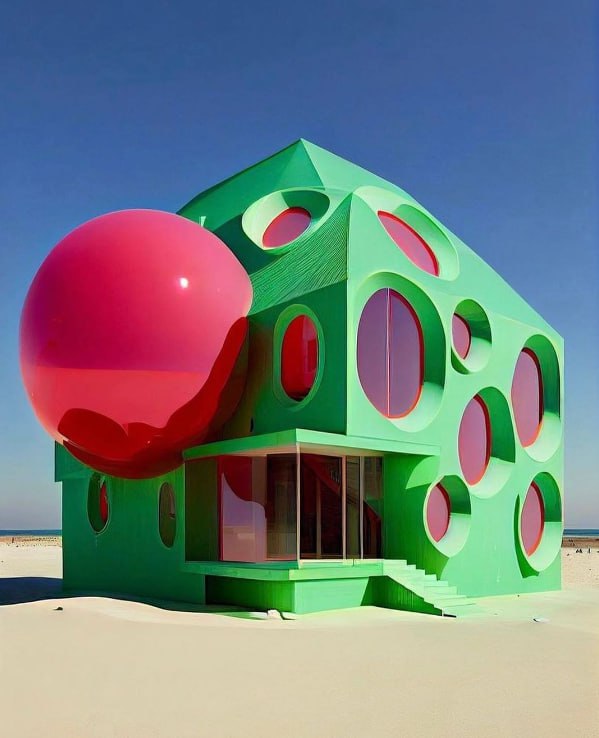
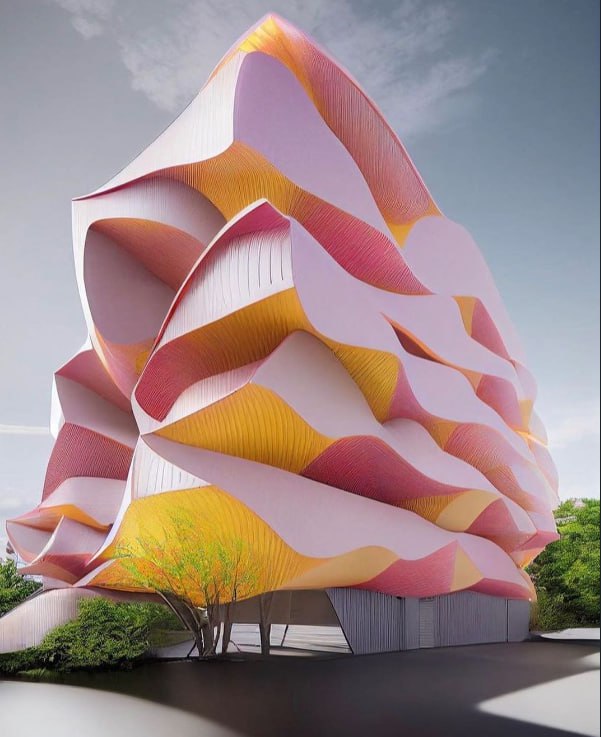
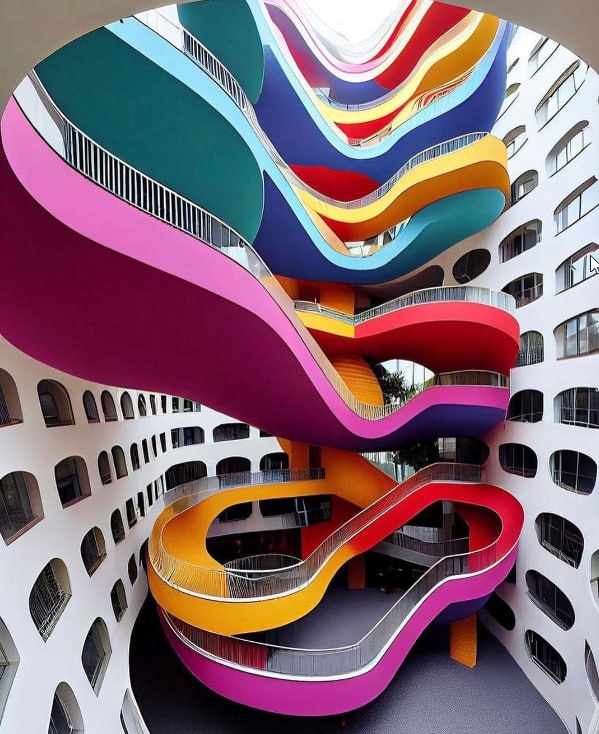
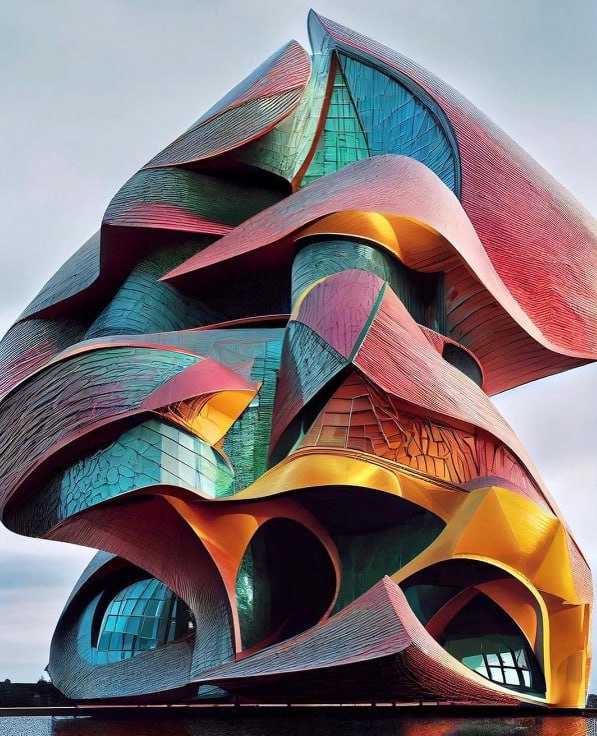
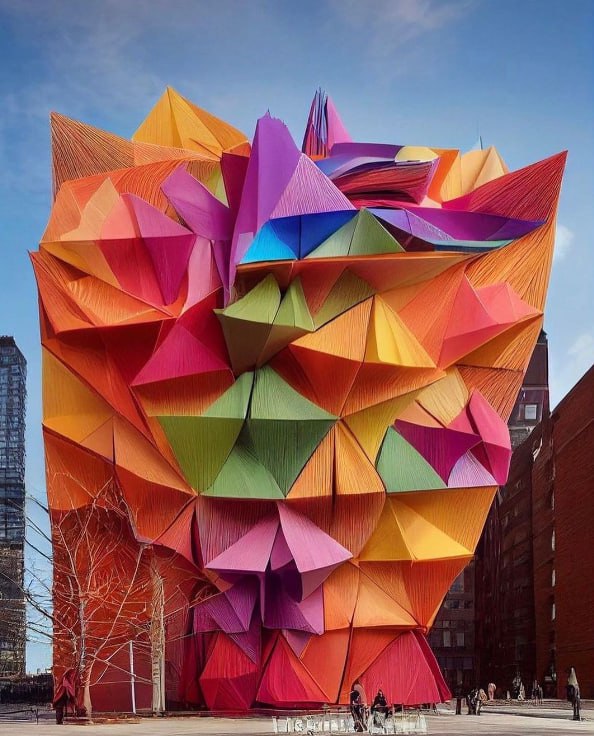
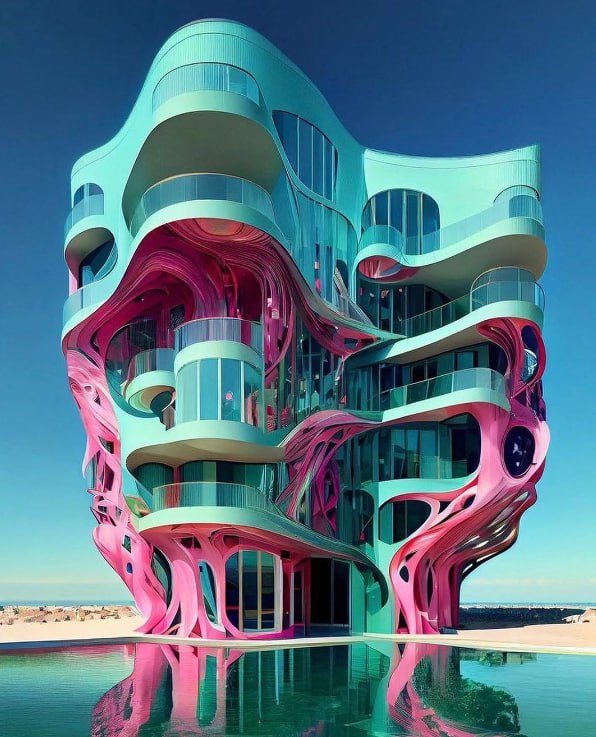
These colourful buildings have been created by Bebel Franco using AI tool Midjourney. Bebel Franco is making a name in AI architecture with stunning visions like the above.
Artificial Intelligence and architects
The images being spawned from the intersection of AI-generated art and architecture are beguiling. The use of such AI tools is leading building designers down creative journeys that they might not have been able to conjure up alone.
Architect Manas Bhatia is an India-based architect that uses AI to generate images of how he wants buildings to look in the future, and he feels that nature will soon blend with human-made constructions. His futuristic renderings look starkly different from other images of the future that AI art generators like Midjourney have come up with previously.
Instead of the usual dystopian images of the future, where the whole world is on fire and the bots have taken over, Bhatia’s images are the opposite. They depict a utopian future where skyscrapers are enveloped in algae. This greenery will clean the air so we humans don’t spend our lives coughing up chunks of pollution.
A dive into his Instagram is totally worth it, but set aside a whole morning for this particular rabbit hole.
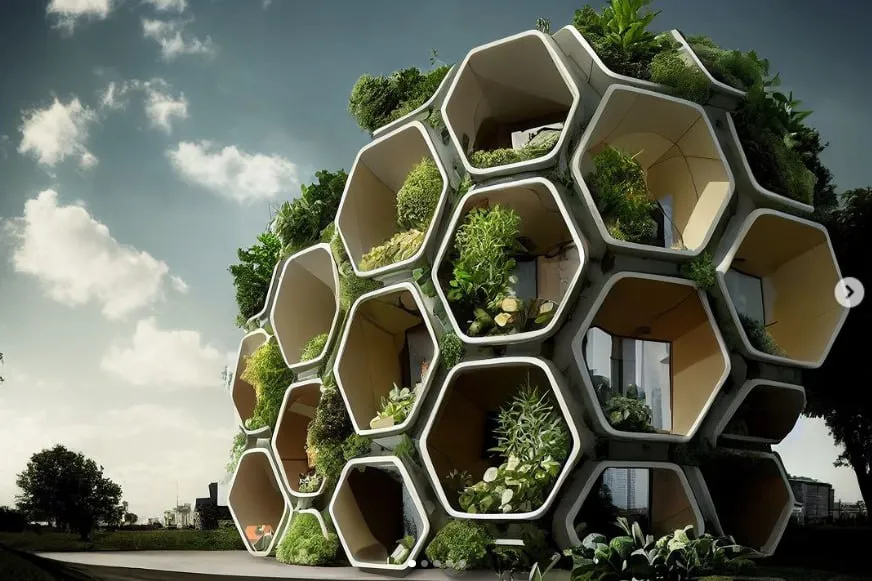
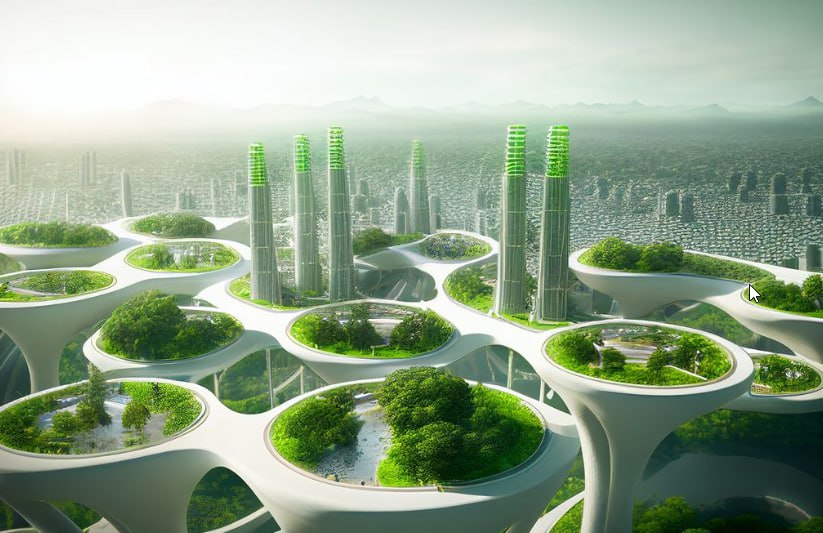
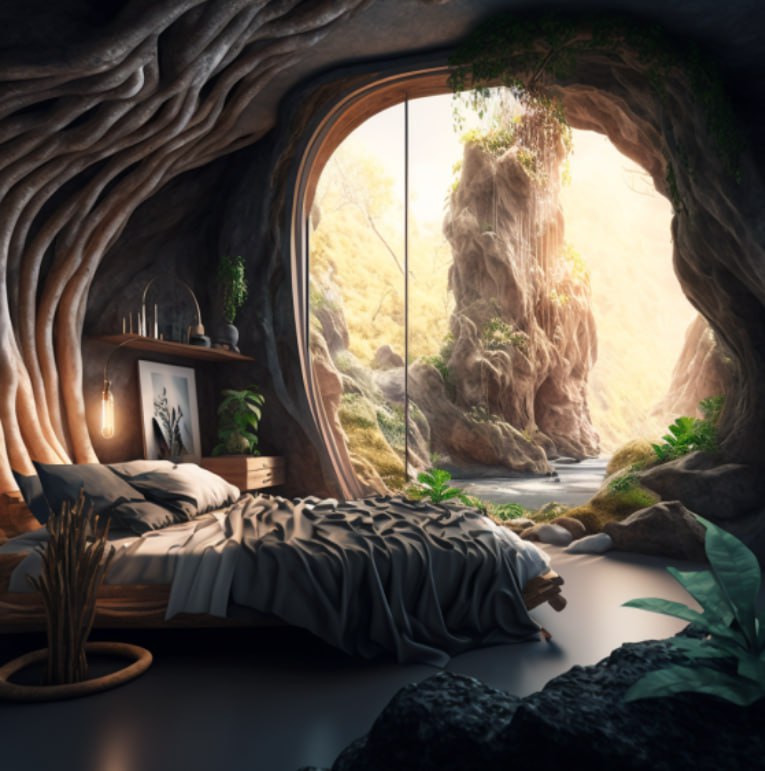
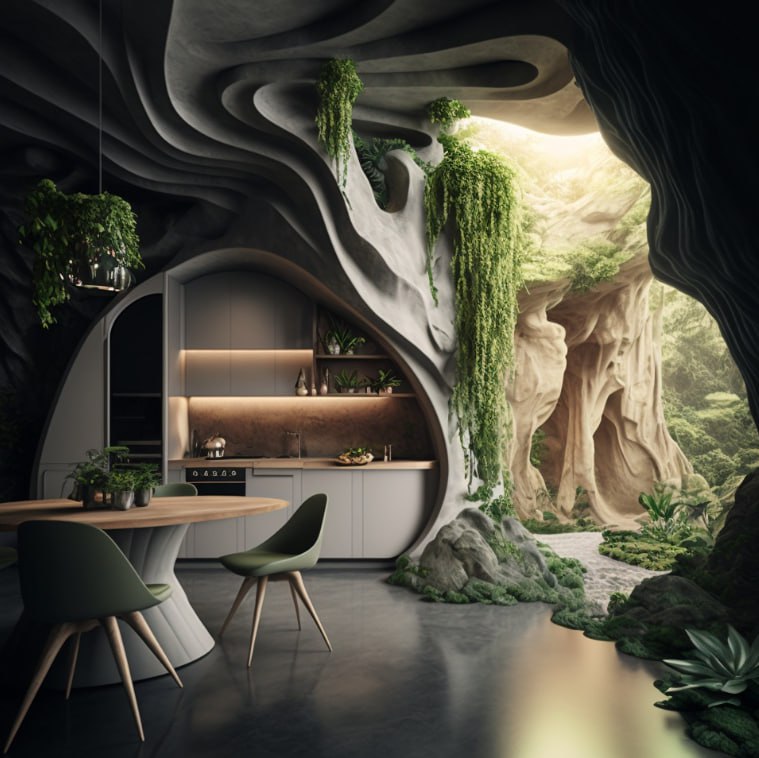
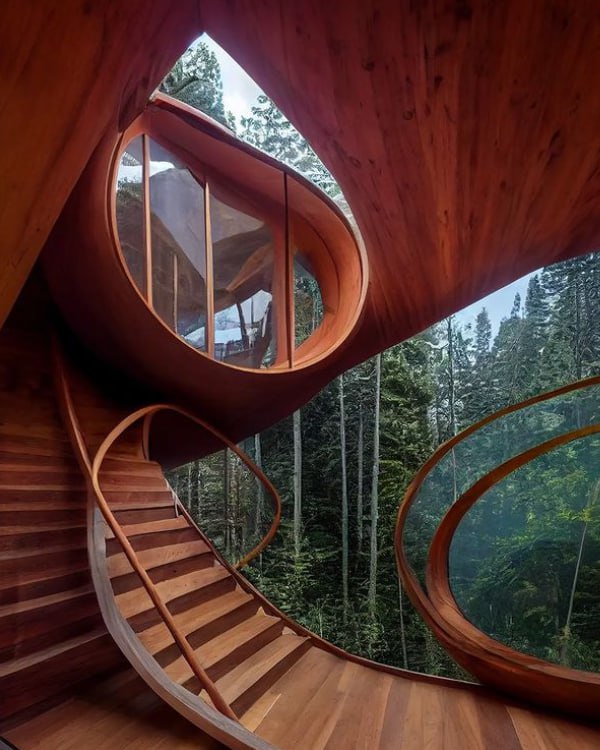
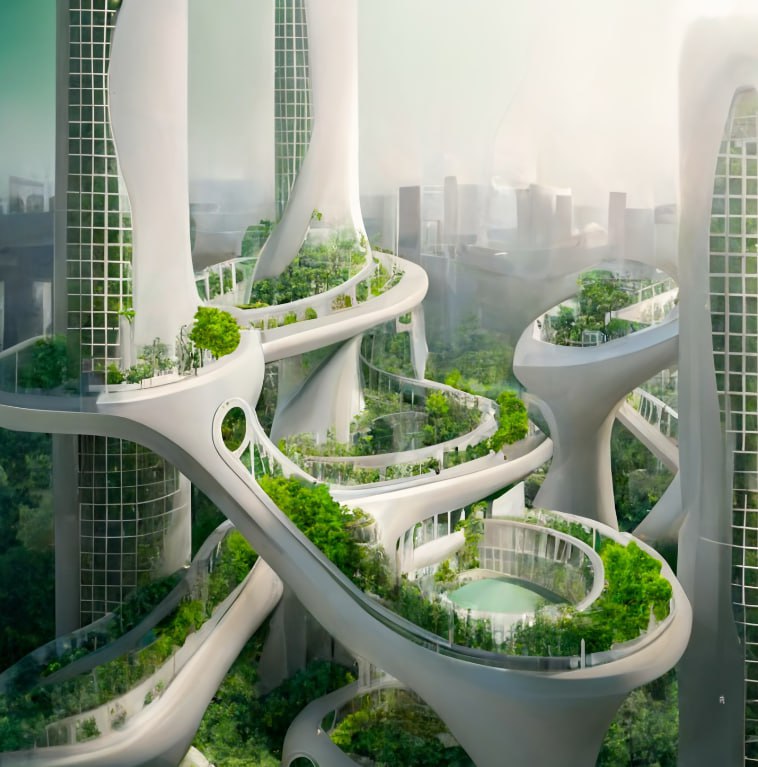
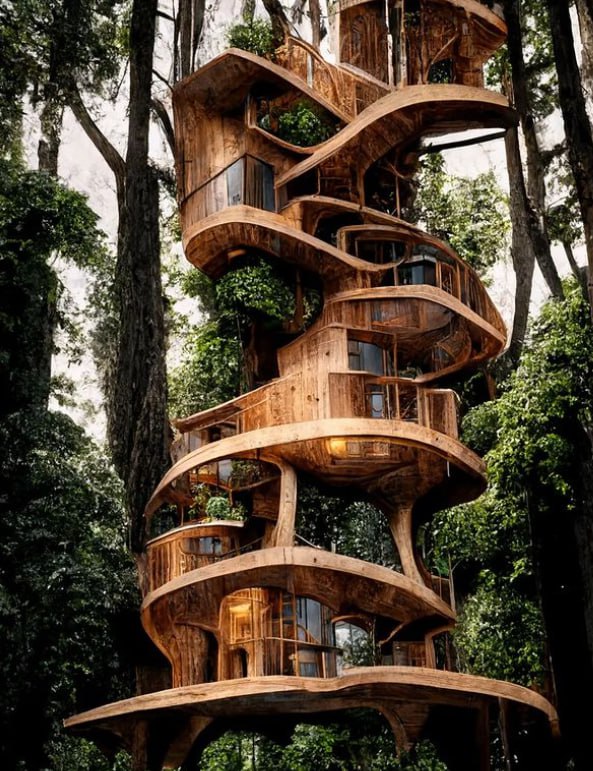
The above pictures are a glimpse into a utopian future thanks to Manas Bhatia Design.
Bhatia says, “This project started as an exploration to visualise the skyscrapers of the future. Can these tall buildings provide enough green space and purify the air for the cities? Architects have long shared a vision of futuristic cities that are a utopia of renewable energy, with clean air, and enough green space for everyone. With the AI text-to-image tools like Midjourney it’s impossible not to take a shot at visualising the same.”
Bhatia has even had a go at designing buildings for Mars. He says that sustainable cities on Mars in the future might be inspired by the form and functionality of a desert cactus.
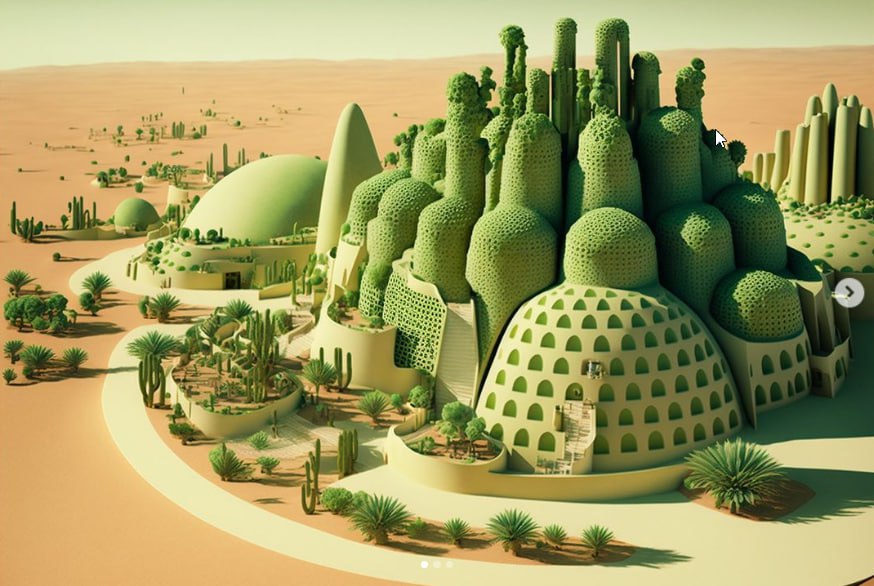
Using AI for functional architecture
Then there’s the practical side of architecture, away from stunning facades and dreamy images of human habitats. AI can help calculate all the boring stuff like efficiency, lighting, and thermal performance of building design, freeing humans up to put it all together more efficiently.
Even today, AI is used in architecture to help figure out how a building will use energy. For example, AI tools can help predict how much sunlight a building will get and how that might affect the temperature inside. This will help save on energy costs and just make the space more comfortable for the humans who live in it. Desert dwellings will become positively heavenly and easier to build.
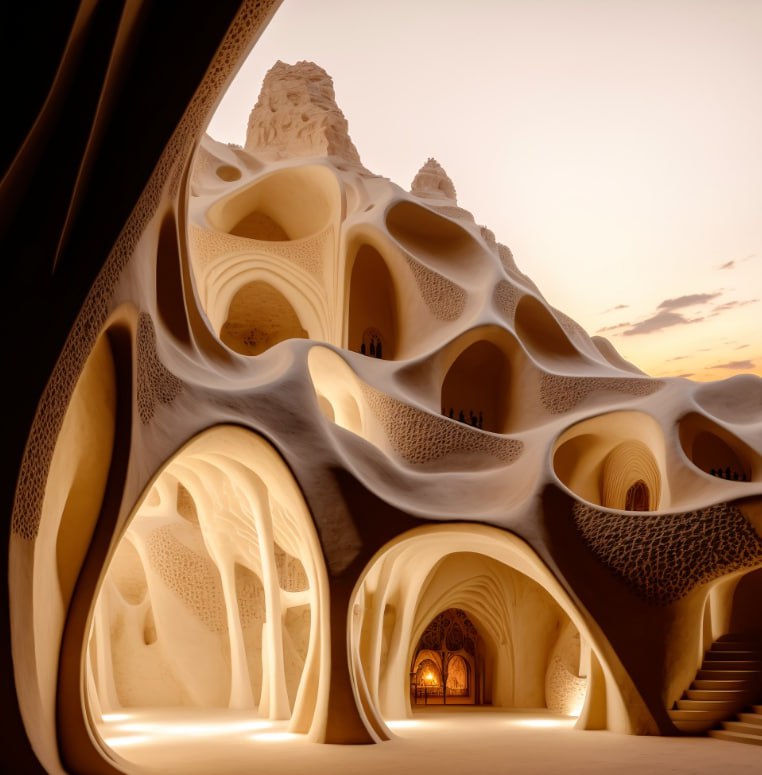
Generative design and AI architects
Another way AI is being used in architecture is through something called generative design. This is when a computer program comes up with different designs for a building based on certain conditions it needs to cater to.
Imagine you are asked to build a toy box for toys, you could give the computer a list of things you want the toy box to have, like a certain colour, size and number of shelves. The computer can show you different designs for the toy box that fit those rules and preferences. This is now being done with AI, and applied to buildings. AI software such as Grasshopper, Rhino, and Dynamo, use algorithms to make designs based on preferences that are input by the architect.
Artificial intelligence can also be used in construction scheduling. More or less, AI can plan out the different steps of constructing a building.
Artificial intelligence can also be used in building maintenance, where an AI can predict when a building might need repairs and devise a plan for how those repairs should be done. We humans no longer need to do the boring stuff and it feels rather exciting and freeing.
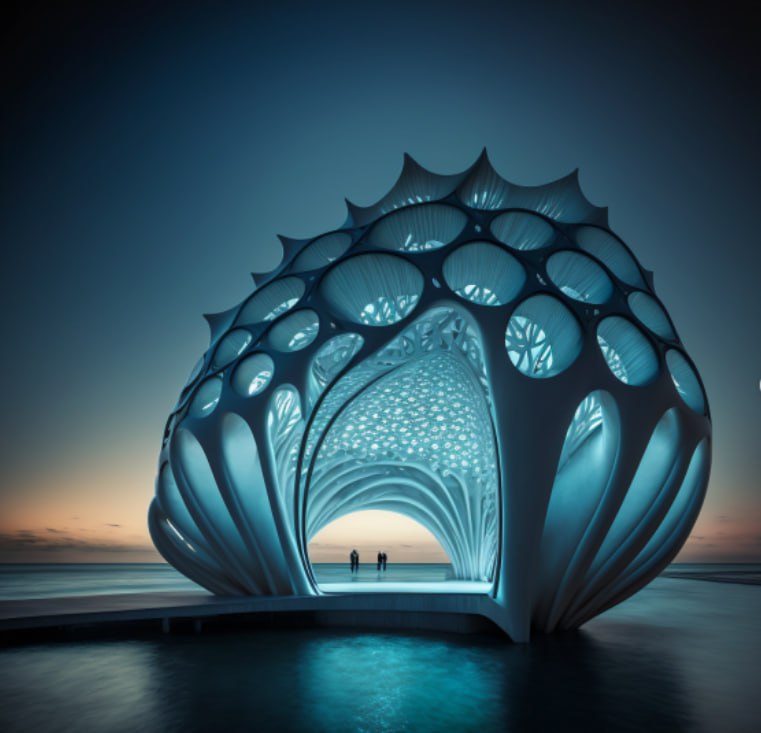
What is artificial intelligence going to do in the future?
While many people feel nervous about the explosion of AI into our lives, it may not end up as a dystopian nightmare. The above examples clearly show that the future will be a utopian one if we use AI to help us put our dreaming into action.





